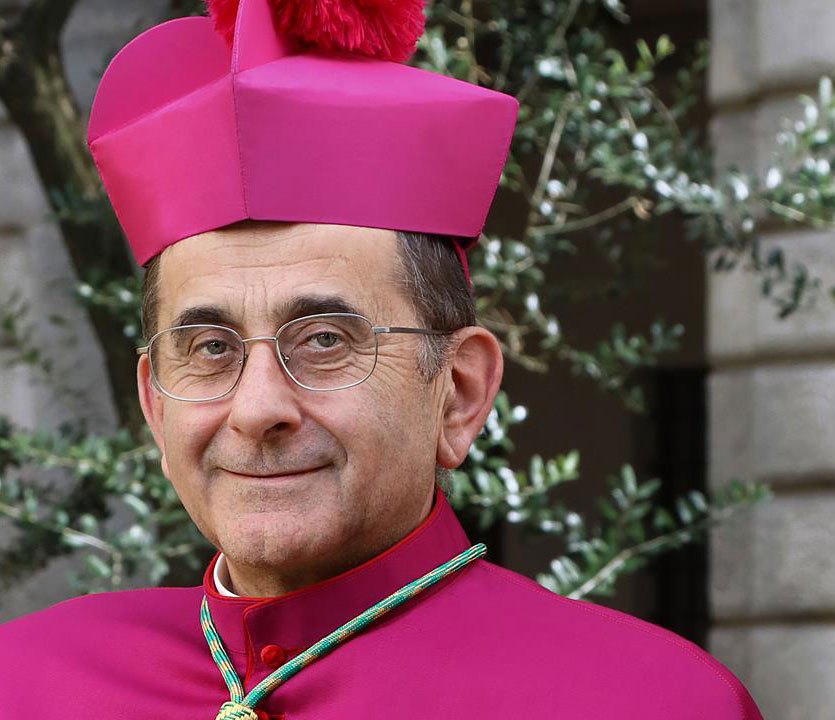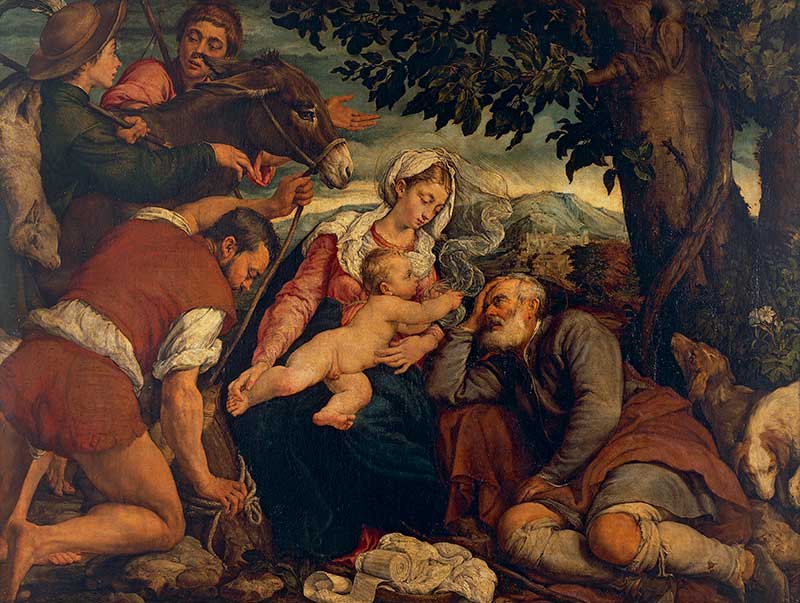Pinacoteca
READING ROOM: SUMMER CLOSURE
Reading room summer closure from July 22 to September 2 included. Reopening on September 2.
More than four hundred years of life, with a still highly relevant task: to promote the love of truth and beauty for the good of people, the Church and society.
In the words of the Archbishop of Milan, who is the patron of the Ambrosiana and ultimately responsible for it, we find the task of this ancient institution embodied in the cultural and social context of our day.
Hope as the reason for the Academy’s work, hope as the source of energy, inspiration, passion for the
Venerable Institution that has lived here for centuries, namely the Ambrosiana Library and Art Gallery,
and for the Classes of the Academy that have been established in this last decade, being added to and
integrated with the more ancient academy of studies of St. Charles Borromeo, active since much earlier.
In fact hope is what makes the life of an institution vital, active and even joyful, and therefore also that of the individual Classes of the Academy and the whole heritage represented by the Biblioteca Ambrosiana and its Gallery of Paintings. Because an institution may even become a museum; it may continue to live just because one day it began.
An institution may continue its journey only because it is driven forward by its past: a journey that
continues because, impelled from behind, it is characterised by a sense of duty that weighs on it as an
obligation. It may even be marked by a sense of heaviness, from a spirit of survival, a sense of
responsibility towards a glorious past whose burden is heavy.

Gran Cancelliere S.E. Mons. Mario Delpini, Arcivescovo di Milano
It might even be like what happens to someone who lives in a wonderful castle built with great resources. The heir hears everyone say: ‘How beautiful, how wonderful, what splendour!’ But he feels the disproportion between its size and the burden of maintenance and the use that he can make of it.
The castle continues to exist and consume resources only because it was built: it is no longer a place of safety, it is no longer a place of festivities, the place for the king's coronation or for the installation of the grand duke. So glorious institutions, collections of documents, works of art pass through moments when they survive only because they are there.
My wish is that this institution should live by hope, for a mission, for a purpose that attracts and motivates a daily commitment. What hope?
The Academy has been divided into study classes to enhance the immense heritage gathered in the Ambrosiana and it summons scholars to the work from all fields. The division into classes is not intended, however, to create closed worlds in which the greatest living specialists end up in solitary specialisation.
Coming together in a single Academy is intended to reaffirm our common vocation to enable the past to speak, so that it helps to keep alive the identity of cultures and peoples and enables each culture to be known, to make available spiritual riches, to contribute to a fuller vision of the astonishing beauty of being alive, of being men and women who can meet and respect each other, who can work together to foster the quality of relationships, the common guardianship of the creation, the concern for the future of humanity on this planet.
In ages when human mobility was slow and individuals and peoples could only travel as phenomena that were termed ‘invasions’, perhaps there was a meaning in a certain vocabulary that called others ‘foreigners’ and the feeling that the habits and customs of other peoples were ‘exotic’, a source of curiosity and surprise, subjects for erudite scholars.
In an age when human mobility is rapid and involves immense numbers of men and women, the enterprise of building a fraternal comity, in which no one is marginalised as a foreigner, is bold and necessary.

Riposo durante la fuga in Egitto, Jacopo da Ponte detto il Bassano (1510-1592), 1547. Prima del restauro, olio su tela, 118 × 158 cm
My wish is that the distinguished scholars and the Academy as a whole should be passionate about the hope to contribute through the work of scholars to this endeavour. The movements of people and families cannot be reduced to problems of public order, to emergencies involving welfare operations, of phenomena that frighten aging societies jealous for their own well-being.
The movements of people and families can become opportunities for encounters and a basis for the future, if knowledge prevails over fear, if tradition is explored as a factor of fertility and not just defended as if it were a precious ornament, if a political framework is not confined to limiting suffering and does not presume to seek to integrate the other or others in the attempt to make everyone the same.
Instead, the building of fraternal comity requires everyone to have the right to speak and everyone to be in a position to listen. And the contributions of scholars must enable us to bring to light the values and limits of each culture and promote mutual appreciation.